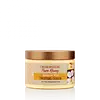What's inside
What's inside
 Key Ingredients
Key Ingredients

 Benefits
Benefits

 Concerns
Concerns

 Ingredients Side-by-side
Ingredients Side-by-side

Water
Skin ConditioningGlycerin
HumectantDisodium Cocoamphodipropionate
CleansingSodium C14-16 Olefin Sulfonate
CleansingCocamidopropyl Betaine
CleansingCitric Acid
BufferingRicinus Communis Seed Oil
MaskingCroton Zambesicus Powder
Glycine Soja Seed Extract
Skin ConditioningCurcumin
AntioxidantDecyl Glucoside
CleansingPanthenol
Skin ConditioningPolyquaternium-7
Polyquaternium-10
Phenoxyethanol
PreservativeEthylhexylglycerin
Skin ConditioningWater, Glycerin, Disodium Cocoamphodipropionate, Sodium C14-16 Olefin Sulfonate, Cocamidopropyl Betaine, Citric Acid, Ricinus Communis Seed Oil, Croton Zambesicus Powder, Glycine Soja Seed Extract, Curcumin, Decyl Glucoside, Panthenol, Polyquaternium-7, Polyquaternium-10, Phenoxyethanol, Ethylhexylglycerin
Water
Skin ConditioningButyrospermum Parkii Butter
Skin ConditioningGlycerin
HumectantCetearyl Alcohol
EmollientGlyceryl Stearate
EmollientCocos Nucifera Oil
MaskingMangifera Indica Seed Butter
Skin ConditioningCetyl Alcohol
EmollientParfum
MaskingCetrimonium Chloride
AntimicrobialPanthenol
Skin ConditioningCarthamus Tinctorius Seed Oil
MaskingArgania Spinosa Kernel Oil
EmollientMel
EmollientCocos Nucifera Fruit Extract
EmollientLauryl Alcohol Diphosphonic Acid
Emulsion StabilisingPentylene Glycol
Skin ConditioningTetrasodium EDTA
Lauric Acid
CleansingTocopheryl Acetate
AntioxidantPhenoxyethanol
PreservativeBenzyl Alcohol
PerfumingCI 19140
Cosmetic ColorantCI 15985
Cosmetic ColorantWater, Butyrospermum Parkii Butter, Glycerin, Cetearyl Alcohol, Glyceryl Stearate, Cocos Nucifera Oil, Mangifera Indica Seed Butter, Cetyl Alcohol, Parfum, Cetrimonium Chloride, Panthenol, Carthamus Tinctorius Seed Oil, Argania Spinosa Kernel Oil, Mel, Cocos Nucifera Fruit Extract, Lauryl Alcohol Diphosphonic Acid, Pentylene Glycol, Tetrasodium EDTA, Lauric Acid, Tocopheryl Acetate, Phenoxyethanol, Benzyl Alcohol, CI 19140, CI 15985
Ingredients Explained
These ingredients are found in both products.
Ingredients higher up in an ingredient list are typically present in a larger amount.
Glycerin is already naturally found in your skin. It helps moisturize and protect your skin.
A study from 2016 found glycerin to be more effective as a humectant than AHAs and hyaluronic acid.
As a humectant, it helps the skin stay hydrated by pulling moisture to your skin. The low molecular weight of glycerin allows it to pull moisture into the deeper layers of your skin.
Hydrated skin improves your skin barrier; Your skin barrier helps protect against irritants and bacteria.
Glycerin has also been found to have antimicrobial and antiviral properties. Due to these properties, glycerin is often used in wound and burn treatments.
In cosmetics, glycerin is usually derived from plants such as soybean or palm. However, it can also be sourced from animals, such as tallow or animal fat.
This ingredient is organic, colorless, odorless, and non-toxic.
Glycerin is the name for this ingredient in American English. British English uses Glycerol/Glycerine.
Learn more about GlycerinPanthenol is a common ingredient that helps hydrate and soothe the skin. It is found naturally in our skin and hair.
There are two forms of panthenol: D and L.
D-panthenol is also known as dexpanthenol. Most cosmetics use dexpanthenol or a mixture of D and L-panthenol.
Panthenol is famous due to its ability to go deeper into the skin's layers. Using this ingredient has numerous pros (and no cons):
Like hyaluronic acid, panthenol is a humectant. Humectants are able to bind and hold large amounts of water to keep skin hydrated.
This ingredient works well for wound healing. It works by increasing tissue in the wound and helps close open wounds.
Once oxidized, panthenol converts to pantothenic acid. Panthothenic acid is found in all living cells.
This ingredient is also referred to as pro-vitamin B5.
Learn more about PanthenolPhenoxyethanol is a preservative that has germicide, antimicrobial, and aromatic properties. Studies show that phenoxyethanol can prevent microbial growth. By itself, it has a scent that is similar to that of a rose.
It's often used in formulations along with Caprylyl Glycol to preserve the shelf life of products.
Water. It's the most common cosmetic ingredient of all. You'll usually see it at the top of ingredient lists, meaning that it makes up the largest part of the product.
So why is it so popular? Water most often acts as a solvent - this means that it helps dissolve other ingredients into the formulation.
You'll also recognize water as that liquid we all need to stay alive. If you see this, drink a glass of water. Stay hydrated!
Learn more about Water